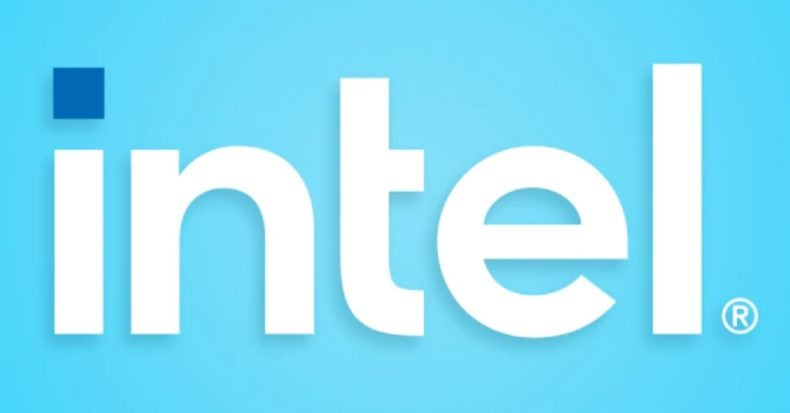Earlier this month, Pat Gelsinger, considered by many the most qualified CEO Intel has had since Andy Grove, made a provocative statement when asked about Intel’s long-running competition with AMD: He replied that AMD is in his rear-view mirror based on Intel’s latest technology.
However, AMD is more likely just a far lower-priority threat than the far bigger ones that Gelsinger is dealing with. AMD was clearly unhappy with the statement, as it appeared Intel was downplaying their importance even though AMD arguably had a better year, from a growth standpoint, than Intel. Still, Gelsinger’s statement is accurate because, while AMD is a powerful Intel competitor, going forward it may be a stronger asset than a liability because Intel is facing bigger problems in the trends of cloud companies building their own processors, the encroachment of ARM into the x86 space, and the massive shortage in domestic chip manufacturing capacity.
As the only other x86 vendor at scale, AMD may be more important as a company that can help assure the future of x86 than a concern as a competitor. Thus, AMD may be in the “rear-view mirror” as a problem because Intel has larger concerns, and AMD is helping with one of the bigger ones, fighting x86 obsolescence.
Let’s explore those issues this week.
Intel’s Big Problems
As well as AMD is doing, it can’t wipe out Intel. But ARM is a threat, which AMD had seen far earlier than Intel. The combination of ARM and custom chips represents a potential existential risk to both AMD and Intel. While Intel is following AMD into providing custom chip design and production capabilities, many of the custom chip efforts are based on ARM technology and not X86, pushing the buyers to other solution providers.
The crippling chip shortage isn’t just damaging the computer industry, it’s contributing to inflation, reducing the availability of appliances, cars, and consumer devices, and is a strategic weakness if the Russian or Chinese conflicts evolve into all-out wars.
With the majority of the world’s chip manufacturing capacity in China, Taiwan and South Korea, a collaborative effort between China, Russia, and North Korea could take over most of it and leave the rest of the world, including the U.S., without enough manufacturing capacity for its industry, let alone any related war effort. This outcome would effectively reverse the dynamic that assured the West’s win in WWII and lay the groundwork for what could be a catastrophic military loss should these conflicts continue to escalate.
In short, Pat Gelsinger is looking at a few existential threats to Intel that well exceed anything AMD could do, and many of these same threats put AMD at risk as well.
Also read: Intel’s Bold New Chip Manufacturing Plan
Anticipating an x86 Consortium
Both AMD and Intel see the emerging threats to x86 and are beginning to realize that the major threats both companies are facing are increasingly common – and coming from the ARM consortium. The companies have some additional time thanks to the failed ARM/NVIDIA merger and coming IPO, which will slow execution. But ARM’s new CEO is out of NVIDIA, and the expected partnership between the two firms should avoid the regulatory problems faced by the failed merger and may, therefore, represent an even stronger competitive challenge to AMD and Intel.
To counter this effort, AMD and Intel may need to increase their collaboration to create a stronger x86 alternative to ARM, and Intel may have to allow for more licensees to assure that x86 isn’t overwhelmed by an increasing number of ARM-focused companies. In short, the future of both companies may depend more on their ability to collaborate to address the ARM and custom processor threats rather than each other over the near term.
Also read: Intel Looks to Partner in Competitive Chip Market
Chip Alliances Shift
The chip industry has seen seismic shifts in the last couple of years, and partnerships that might have once seemed unimaginable are now possible.
AMD becoming a lower concern for Intel has little to do with AMD and more to do with the far larger threats facing Intel and the entire U.S. microprocessor industry. These threats are a result of the lack of domestic manufacturing capability and the growing use of ARM for personal technology, automotive, and IoT, along with the increasing tendency of cloud providers to design their own processors. At scale and in combination, these trends could, when they mature, force x86 out of the market and do both AMD and Intel substantial harm.
As a result, AMD could be more important as a potential partner for Intel in these coming fights and less of a risk as a competitor. This could result in some interesting future collaborations and partnerships in a chip industry that is likely to be dramatically reshaped in the coming months and years. Often a large common enemy can force two warring factions to come together against the common foe, and AMD and Intel have several of them, all of which are greater threats than AMD and Intel are to each other.
Both companies’ CEOs, Lisa Su and Pat Gelsinger, are known for having very strong partnering skills, suggesting there may come a time, in a few short years, where the two firms are more allies than enemies and, as a result, far better able to handle the coming storms. The best outcome for both firms would be if AMD wasn’t in Intel’s rear-view mirror and was instead fighting by its side to assure the future for x86.
Further reading:
Why AMD Has Been So Successful: Mark Papermaster



